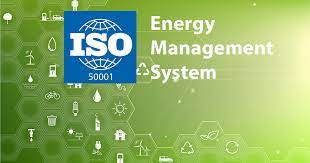ISO 50001 Training: Empowering Energy Management Excellence
In an era where sustainability and energy efficiency are paramount, ISO 50001 has emerged as a critical standard for organizations seeking to optimize their energy use. ISO 50001 provides a framework for establishing, implementing, maintaining, and improving an Energy Management System (EnMS). Training in ISO 50001 is essential for professionals looking to enhance their skills in energy management and for organizations aiming to reduce energy consumption and environmental impact. This article explores the importance of ISO 50001, the structure of ISO 50001 training, the benefits of ISO 50001 certification, and the steps involved in obtaining certification.
The Importance of ISO 50001
ISO 50001 is an internationally recognized standard that helps organizations manage and reduce their energy consumption systematically. It provides a structured approach to improving energy performance, which can lead to significant cost savings and environmental benefits. The importance of ISO 50001 lies in its ability to help organizations develop a comprehensive energy management strategy that aligns with their operational goals and sustainability objectives.
One of the primary drivers for adopting ISO 50001 is the increasing global focus on energy efficiency and sustainability. Governments and regulatory bodies worldwide are implementing stricter energy regulations and incentives for energy-efficient practices. By adopting ISO 50001, organizations can ensure compliance with these regulations and take advantage of available incentives.
ISO 50001 also helps organizations mitigate the risks associated with energy price volatility. By improving energy efficiency and reducing energy consumption, organizations can decrease their dependency on energy resources and enhance their resilience to energy price fluctuations. This stability is particularly important for industries with high energy consumption, where energy costs can significantly impact profitability.
Structure of ISO 50001 Training
ISO 50001 training is designed to equip professionals with the knowledge and skills needed to implement and manage an effective EnMS. The structure of the training typically includes a combination of theoretical learning, practical exercises, and case studies to ensure a comprehensive understanding of the standard and its application.
The first component of ISO 50001 training is an introduction to the standard and its key concepts. This includes an overview of the ISO 50001 framework, its objectives, and the benefits of implementing an EnMS. Participants learn about the standard’s requirements and the principles of energy management, including energy planning, energy performance indicators, and energy baselines.
Benefits of ISO 50001 Certification
Achieving ISO 50001 certification offers numerous benefits to organizations, from cost savings and regulatory compliance to enhanced reputation and competitive advantage. These benefits underscore the value of investing in an effective EnMS and pursuing ISO 50001 certification.
One of the most significant benefits of ISO 50001 certification is cost savings. By implementing an EnMS, organizations can identify and eliminate energy inefficiencies, leading to substantial reductions in energy consumption and costs. These savings can have a direct positive impact on the organization’s bottom line, particularly for industries with high energy usage. Moreover, the continual improvement aspect of ISO 50001 ensures that these savings are sustained and enhanced over time.
The iso 50001 training is conducted in two stages by the certification body. Stage 1 involves a documentation review to ensure that the EnMS is adequately documented and meets the ISO 50001 requirements. If the documentation is found to be satisfactory, the process moves to Stage 2, which involves an on-site audit to verify the implementation and effectiveness of the EnMS. The auditors will review records, interview staff, and observe practices to assess compliance with the standard.
If the organization successfully passes the Stage 2 audit, it is awarded ISO 50001 certification. However, the certification is not a one-time event. To maintain certification, the organization must undergo regular surveillance audits, typically conducted annually, to ensure ongoing compliance with the standard. These audits help identify any new risks or areas for improvement and ensure the continual improvement of the EnMS.
